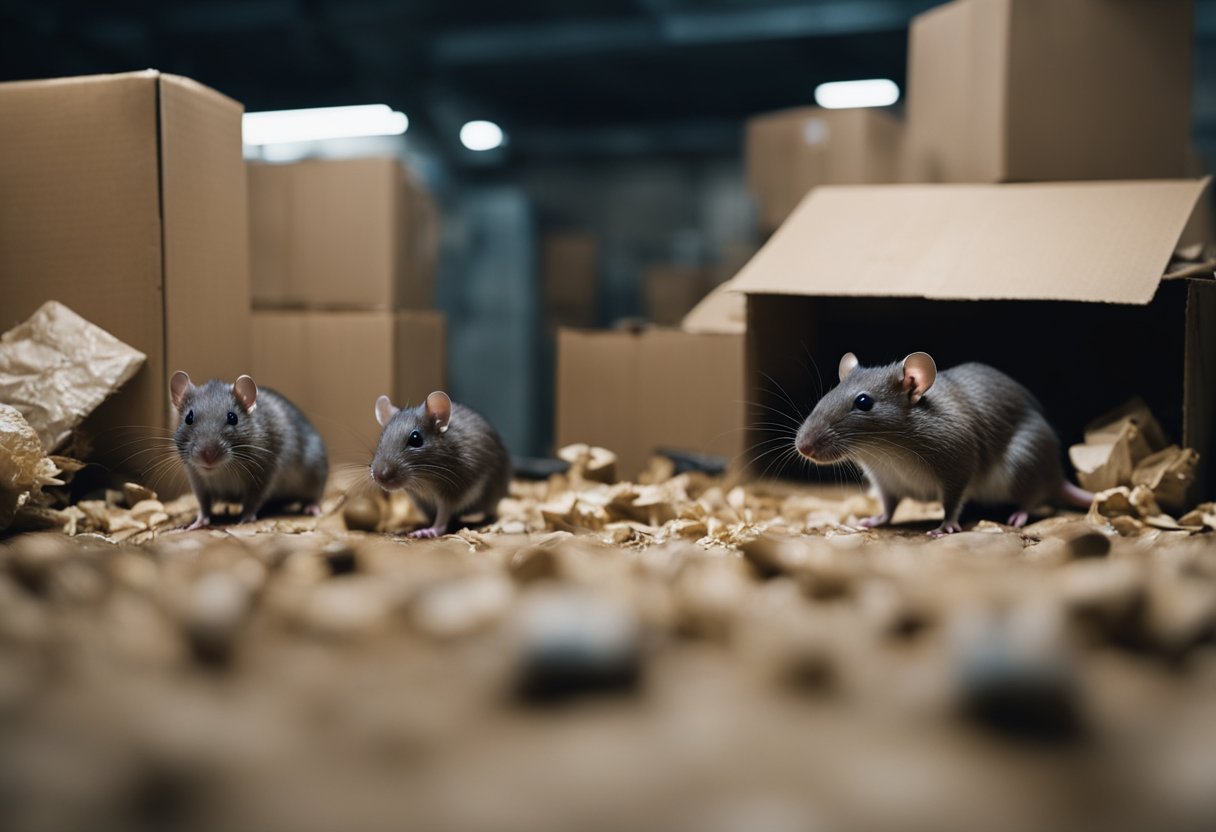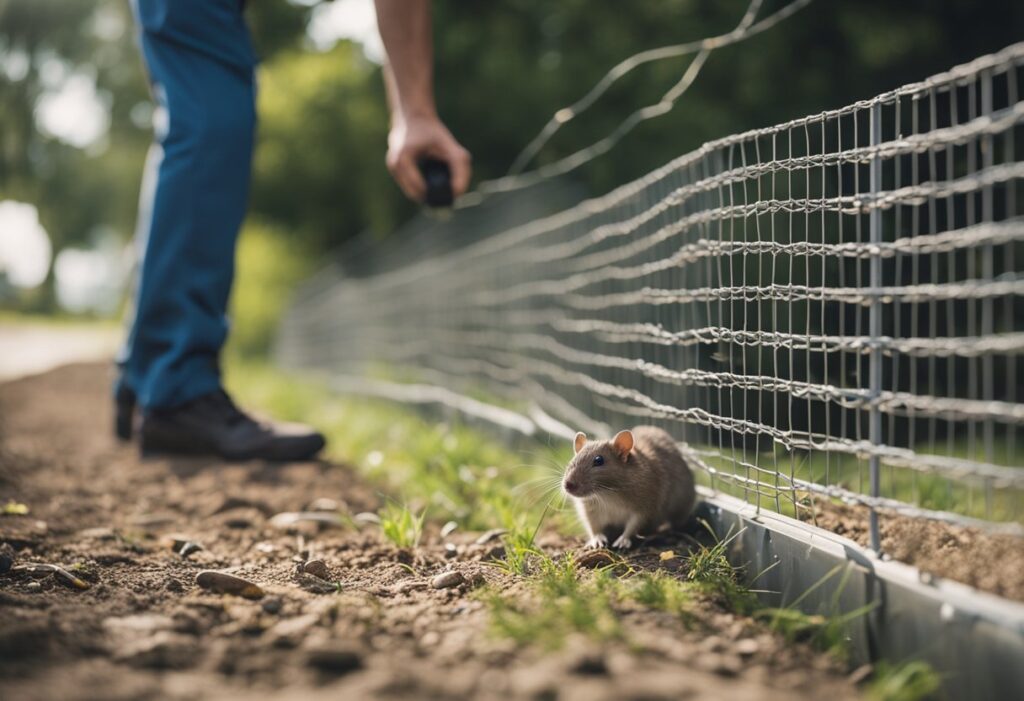Address
304 North Cardinal St.
Dorchester Center, MA 02124
Work Hours
Monday to Friday: 7AM - 7PM
Weekend: 10AM - 5PM
Address
304 North Cardinal St.
Dorchester Center, MA 02124
Work Hours
Monday to Friday: 7AM - 7PM
Weekend: 10AM - 5PM

Rat infestations are a significant problem for property owners in Sydney. They disrupt daily life and pose serious health risks to residents. These unwanted guests can quickly turn a peaceful home or successful business into a scene of chewed wires, spoiled food supplies, and damage to the structure.
The urban environment of Sydney provides ideal conditions for rat populations to flourish:
To effectively control rats, a quick and strategic approach is necessary. This involves combining traditional methods with modern techniques. Professional pest control services in Sydney offer comprehensive solutions that address both immediate removal needs and long-term prevention.
The key to successful rat control is understanding the behaviour patterns of these intelligent rodents and implementing targeted interventions. By strategically placing monitoring stations and using eco-friendly elimination methods, proper rat control can protect your property while ensuring humane treatment of these persistent pests.

Sydney’s urban landscape is home to two main species of rats:
Effective rat control Sydney demands a comprehensive strategy that combines proven methods with professional expertise. A successful rat removal program integrates:
These adaptable pests make their homes in:
Rats can find their way into buildings through various openings, including:
Rats are known carriers of serious diseases that can be transmitted to humans:
In addition to diseases, rats also carry parasites such as fleas and mites, posing further health risks to residents of Sydney. Their constant gnawing behaviour can cause damage to property infrastructure, electrical wiring, and stored items, making it crucial to identify and control rat infestations promptly for both health and safety reasons. Read more about damage at https://pmc.ncbi.nlm.nih.gov/articles/PMC10801582/
Effective rat control starts with creating an environment that’s hostile to these unwanted guests. A clean, well-maintained property naturally deters rats by eliminating their basic survival needs.

Regular property inspections help identify potential entry points before rats discover them. A 6mm gap is all these rodents need to squeeze through, making thorough sealing essential. Professional pest controllers can identify less obvious entry points and recommend appropriate rodent-proof materials for different areas of your property.
Learn more at: Why You Need a Termite Inspection in Sydney Before Buying a Property
Early detection plays a crucial role in successful rat control. Professional pest controllers in Sydney employ various monitoring techniques to identify and track rodent activity before infestations become severe.
Regular monitoring allows pest controllers to adapt their strategies based on rat behaviour patterns. These techniques help identify the extent of infestations and determine the most effective control methods for each unique situation. Click here to find more about infestations.
Professional pest managers maintain detailed monitoring logs to track the success of control measures and adjust their approach when needed. This systematic approach ensures quick identification of new rat activity and enables rapid response to prevent established infestations.
Integrated Pest Management offers a comprehensive strategy for long-term rat control, prioritising prevention and non-chemical methods before considering pesticide use. This systematic approach combines multiple control techniques to create an inhospitable environment for rats while protecting human health and the environment.
Key Components of IPM for Rat Control:
IPM Decision-Making Process:
This structured approach ensures sustainable rat control while minimising environmental impact. By integrating various control methods, IPM creates multiple barriers against rat infestations, making it harder for populations to establish and thrive in Sydney properties.
The success of IPM relies on consistent monitoring and adjustment of control strategies based on observed results. Regular assessment helps identify which combinations of methods work best for specific situations, allowing for targeted and efficient rat control solutions.
Quick rat removal requires strategic deployment of appropriate control methods. Here’s a detailed look at proven techniques for effective rat control in Sydney:
Professional pest controllers combine these methods based on specific infestation characteristics and property requirements. Regular adjustment of control strategies ensures maximum effectiveness while maintaining safety standards.
Professional pest control operators in Sydney must adhere to strict regulatory requirements established by the NSW Environment Protection Authority (EPA) and local councils. These regulations protect both public health and environmental safety.
A robust documentation system helps pest controllers:
Professional pest managers must also maintain up-to-date knowledge of changing regulations and best practices through regular training and industry updates. This commitment to compliance ensures safe, effective rat control while protecting Sydney’s residents and environment.
Staff education plays a vital role in maintaining effective rat control measures. A well-trained team can identify early warning signs and implement preventive strategies before infestations become severe.
Professional training programmes should include practical demonstrations and hands-on experience in identifying rat activity patterns. Staff members need to understand the importance of maintaining consistent cleaning routines and reporting unusual signs promptly.
Regular refresher courses help keep teams updated on new control methods and reinforce best practices. This ongoing education creates a proactive approach to pest management, reducing the likelihood of serious infestations developing.
A documented training system ensures all staff members understand their roles in maintaining pest-free environments. This systematic approach to education strengthens the effectiveness of rat control measures across residential and commercial properties.
Successful rat control often faces two significant hurdles: rodenticide resistance and bait aversion. These challenges require strategic approaches to maintain effective pest management.
Professional pest controllers adapt their approaches based on rat behaviour and resistance patterns. A combination of different control methods, coupled with strategic placement and regular monitoring, helps overcome these common challenges in rat control programmes.
These essential components work together to create a robust defence against rat infestations while ensuring the safety of people, pets, and the environment.
Professional rat removal services in Sydney, like Andy’s Pest Control, bring the expertise needed to implement these best practices effectively. Our experienced team delivers:
Don’t let rat problems escalate – trust qualified professionals to protect your property. Contact Andy’s Pest Control today for a thorough inspection and tailored rat control strategy that meets your specific needs while maintaining the highest safety and effectiveness standards. Additionally, if you’re facing issues with termites, we also offer comprehensive termite pest control services in Sydney to protect your property from these destructive pests.